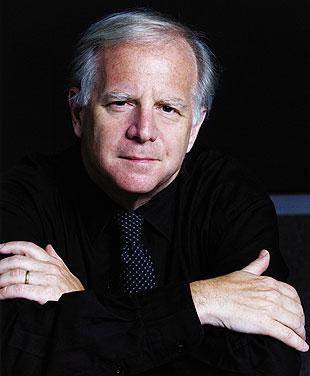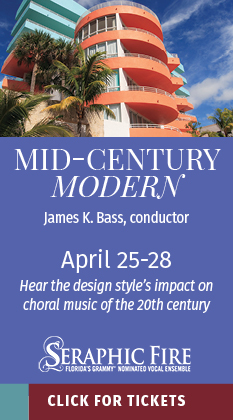Grimaud offers emotive Brahms, Slatkin dramatic Shostakovich with New World

Hélène Grimaud performed Brahms' Piano Concerto No. 1 with Leonard Slatkin and the New World Symphony Saturday night at the Arsht Center.
There’s always a sense of occasion when the New World Symphony leaves its base in Miami Beach for the grander surroundings of the Arsht Center’s Knight Concert Hall.
The orchestra brings star performers and big classics to the 2,200-seat hall, in this case the French pianist Hélène Grimaud and the veteran American conductor Leonard Slatkin. And on Saturday night there was the added lure of seeing these musicians in works to which they felt particularly close.
Grimaud has long felt a special relationship to Brahms’ Piano Concerto No. 1. The work was first sketched out after the suicide attempt of Brahms’ friend Robert Schumann, and the French pianist told the New Yorker magazine last year that she broke down and cried as a teenager after performing the first movement.
Her performance was one of grand tragedy, emphasizing dramatic power over interpretive subtlety. After Slatkin led the orchestra through the thumping, turbulent introduction, Grimaud entered with a melody in thirds, played in a free-form manner that gave the impression that the performance would lack rhythmic discipline.
But that turned out not to be the case, and she proceeded with steely precision and absolute technical control that brought out the work’s dark power. In the fast double octaves that lead up to the climactic restatement of the main theme, she played with great percussive drive, slowing up just a bit to give dramatic weight to the passage without losing forward momentum.
Grimaud is an emotive performer, swaying to the music and engaging in heavy breathing that was audible thirty feet from the stage. The second movement showed her affinity for the work’s climactic moments as she drew tones from the Steinway that easily cut through Brahms’ thick orchestral writing. The third movement was taken at a rapid pace, with Grimaud playing in a free style that shorted some of the Bach-like precision of this consciously old-fashioned movement. But there was nothing calculated about her playing and her passion and engagement made this a highly satisfying performance.

Leonard Slatkin
Slatkin conducted the Shostakovich Fifth Symphony from memory. His interpretation was a straightforward one that seemed to steer clear of the politics that have surrounded this symphony since its 1937 premiere. He took the finale, the most controversial part of the work, at a stately pace, neither accelerating in the end to create a parody of Stalinist triumphalism nor making it a deafening statement of orchestral bombast.
The first movement was a masterpiece of pacing, as Slatkin led the orchestra across terrain that ranged from classic orchestral grandeur to moments of dissonant, 20th-century bleakness. The orchestra’s brass section was a standout—the horns’ precise and menacing when they restated the second theme, the entire section weighted and balanced in the great climax of the first movement.
In keeping with Slatkin’s middle-of-the-road approach, the quick second movement didn’t descend into the sort of grotesqueness and sarcasm with which other conductors approach it. In the slow third movement, the orchestra’s fine string sections shone, creating a rich, glowing tone in Shostakovich’s somber melodies. Slatkin often gave the orchestra the space in which to phrase freely, as with the second movement oboe solo over tremolos in the violins, the conductor simply ceasing to direct the musicians and just allowing them to play.
Posted in Performances
Leave a Comment
Sun Apr 15, 2012
at 12:50 pm
No Comments




